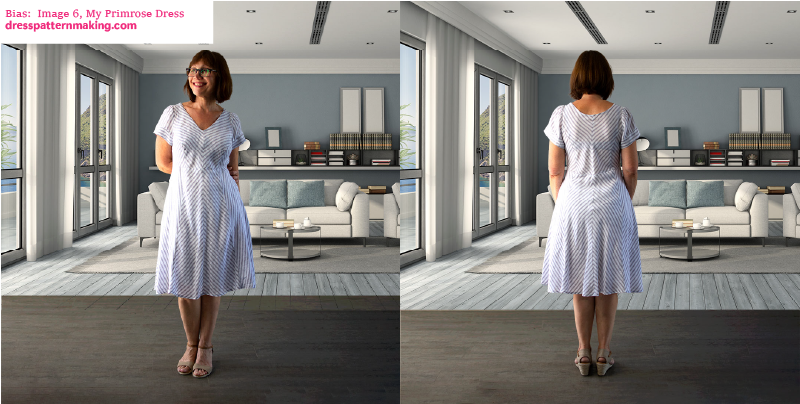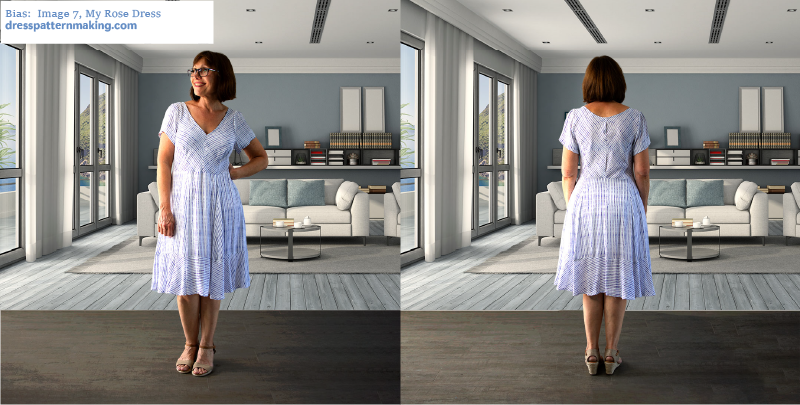Bias
The diagonal line of the fabric at 45 degrees to the lengthwise and crosswise grains.
A garment is said to be "cut on the bias" when the warp and weft threads are at 45 degrees to the major seam lines. The bias line has the most stretch, and fabrics cut on the bias drape well.
Examples
Image 1 shows the lengthwise, crosswise and bias grain on a piece of fabric.
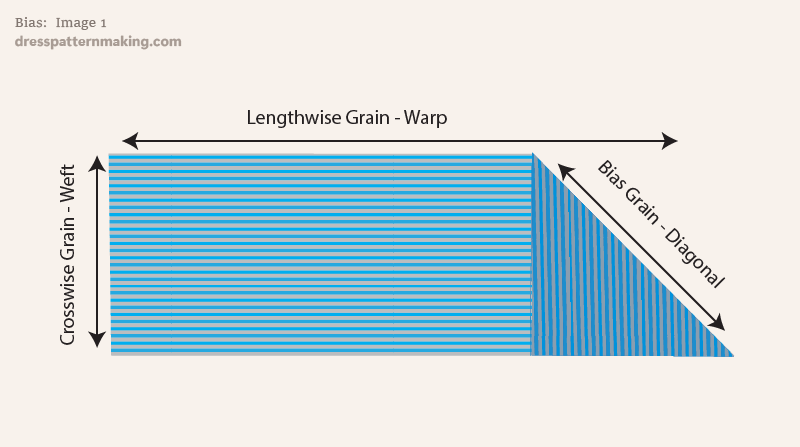
Image 2: A garment is said to be "cut on the bias" when the warp and weft threads are at 45 degree to the major seam lines. In this image the Major seam line for these two skirts is the Center Front. In the skirt (overlaid) to the left, the CF is aligned with the lengthwise grain - this is the more common way to lay the pattern on the grainline to cut out a skirt. On the right hand side is a skirt laid with the CF on the bias. It may be hard to visualize the grainline on both sides of this skirt.. so have a look at the next image.
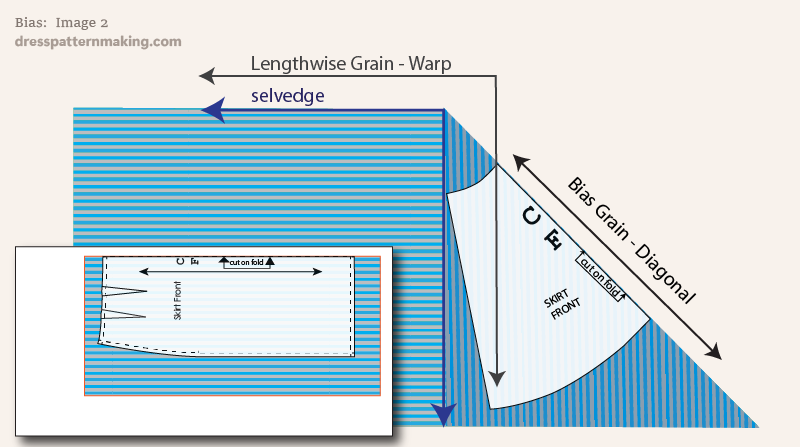
Image 3: In this image, instead of using a half-skirt pattern piece placed on the fold, a full skirt pattern has been placed with the CF on the bias. This is the same as using half and placing it on the bias - it is just easier to see how the grainline runs through both sides of the skirt.
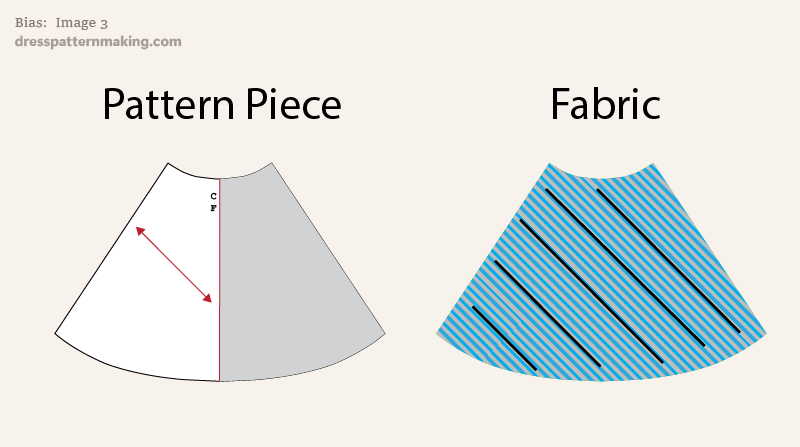
Image 4: On the left is how the grainline would be placed on the pattern piece, and on the right is how the grainline would be working in the skirt. As the Lengthwise grainlines are "strong", they would would want to hang vertically and would pull down, giving more scalloped edge to the hem (see next image) than a skirt with the CF on the straight grain.
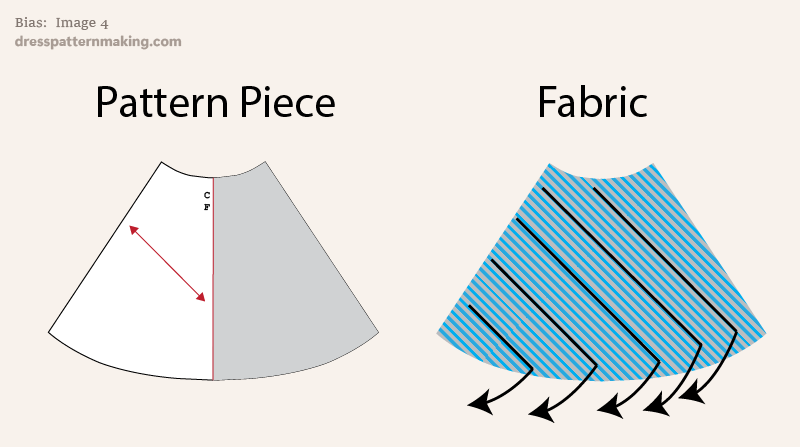
Image 5: Here is the same pattern as in Image 4, but with a seam in the centre front. This allows for a symmetrical effect, with the pattern reflected on the Centre Front.
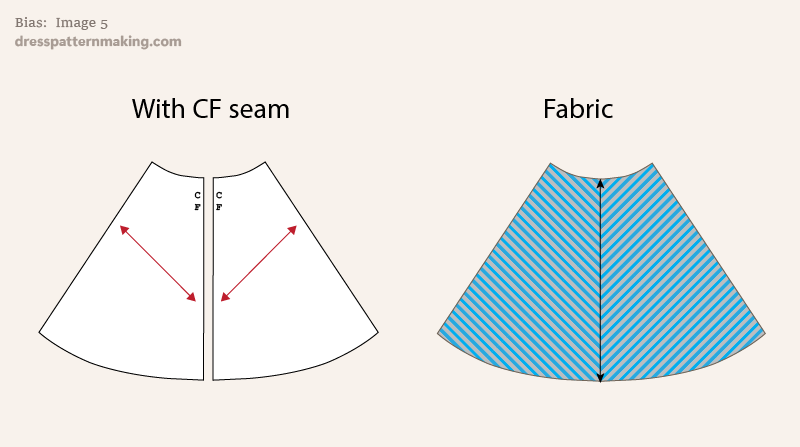
Images 6 & 7: Primrose Dress (linen) & Rose Dress (viscose). Here are 2 dresses cut on the bias. There is a CF seam in the Bodice and Skirt, Front and Back. These dresses look very similar but have a few differences. They have the same bodice and sleeve, but different skirts (and the Rose dress has a skirt flounce). Click on the images to see larger close-up versions.
